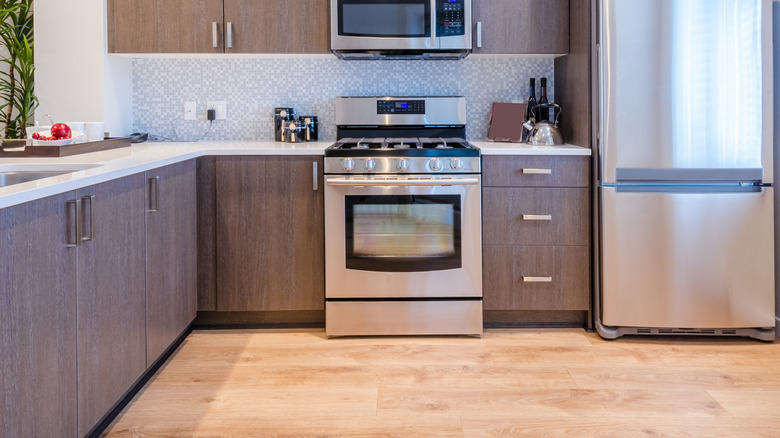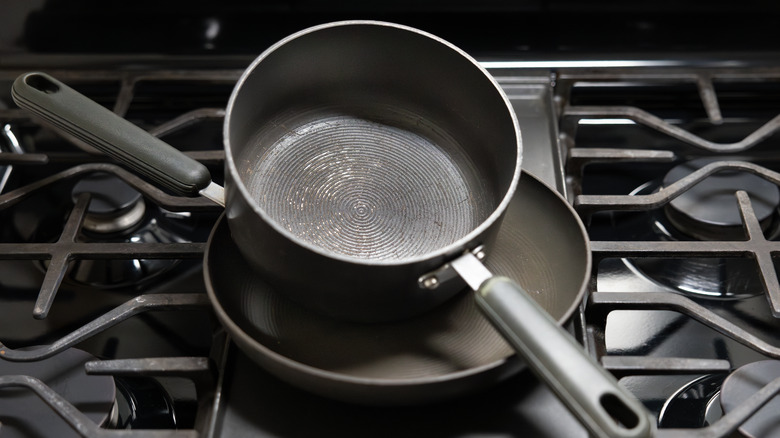The Popular Cookware Material That Should Never Go In Your Oven Drawer
Whether that drawer at the bottom of your oven is actually meant as storage or not, doesn't stop most of us from using it as a junk drawer for pots, pans, and cooking utensils. Not only does it give you extra space for large items that may not fit comfortably anywhere else in the kitchen, it also keeps your cookware conveniently close to the place you use it most. But what, if anything, should actually be stored in that drawer? Most of us might not know that your oven's bottom drawer may actually have another function. For example, it could be a food warmer or a broiler, depending on your model. However, if your oven's drawer is intended as storage, there is one type of material you should never keep inside it — nonstick cookware.
While there have been some indications that you should stop using nonstick pans all together, they are still popular for a number of reasons. Most notably, they offer easy cleanup due to their slick surfaces and healthier cooking options (since you need less oil to create a stick free surface). That is enough to keep them competing against popular alternative cooking materials like stainless steel and cast iron. But with nonstick cookware comes very particular care instructions, especially around how much heat the material can safely endure. This is why experts suggest that you keep your nonstick pots and pans out of your oven drawer to prevent damage to the coating from excess heat.
Nonstick cookware is a little on the sensitive side
Nonstick cookware is prone to scratches, gets easily damaged by harsh cleaners, and doesn't come close to holding up against high temperatures like alternative materials. But what exactly happens when you store your nonstick pots and pans in your oven drawer? You leave them exposed to ongoing residual heat from your oven, which can lead to its deterioration, which not only impacts the performance of your cookware, but can also release harmful toxins into your food. The safety concerns of teflon pans is well-known at this point, which is why nonstick pans are one of those items in the kitchen you should get rid of as soon as they begin to show signs of damage.
So what should you do to keep your pans working at full capacity besides keeping them out of the oven drawer? Most nonstick cookware have a maximum restriction of 500 degrees Fahrenheit, so you should only use your nonstick pots and pans on low to medium heat. You should also avoid stacking them on top of each other to prevent scratching or further damage to the coating. If you're able to hang them on a wall in your kitchen, that's the best option. However, if you do need to stack them, make sure you put a protective lining between each pan and keep them away from sharp objects. You can also look into more ways to organize your pots and pans with limited cabinet space.

